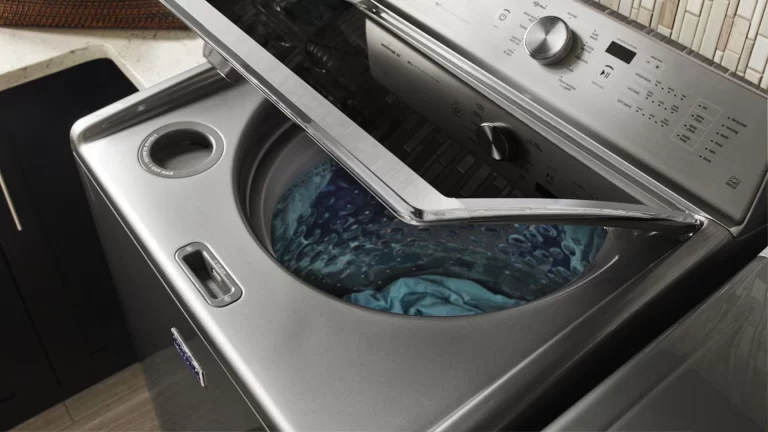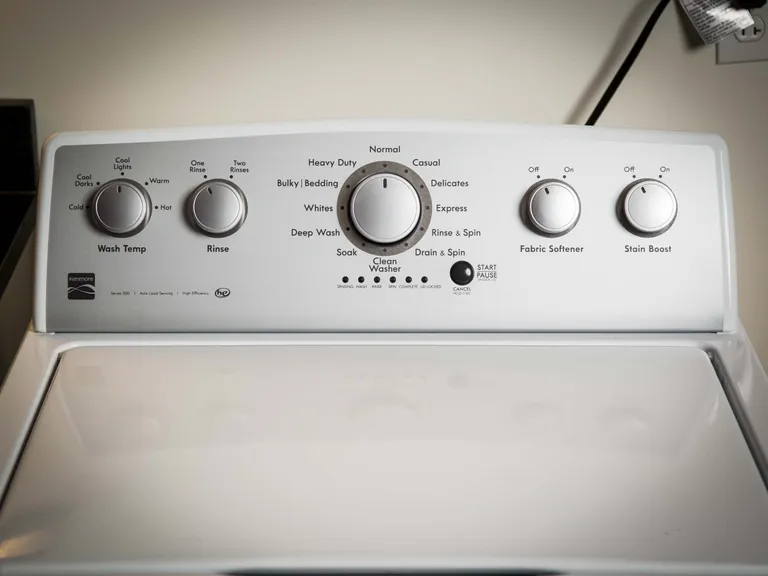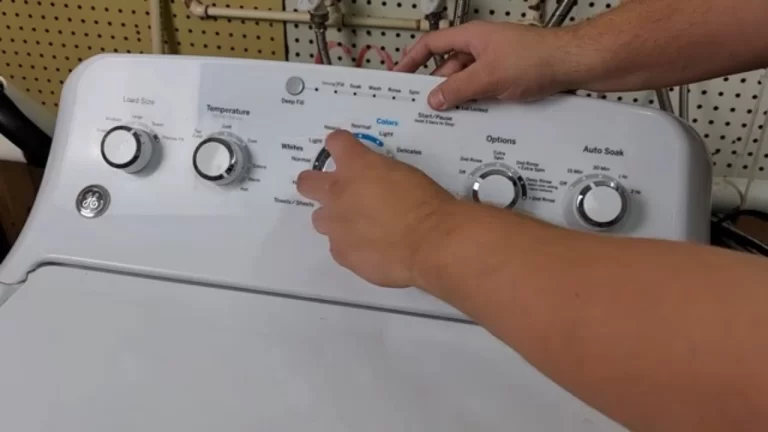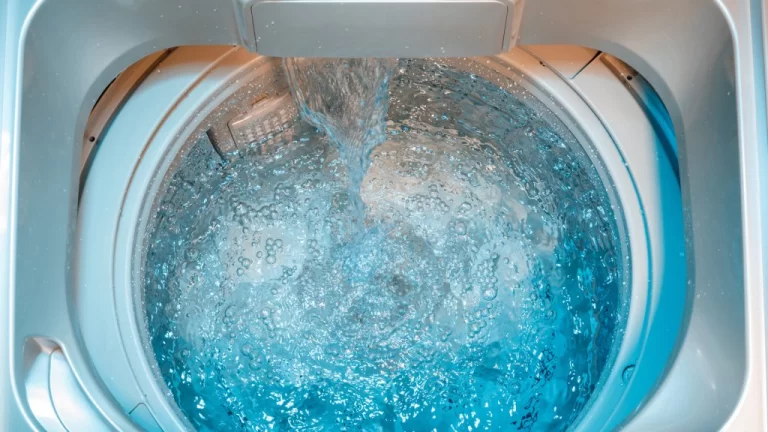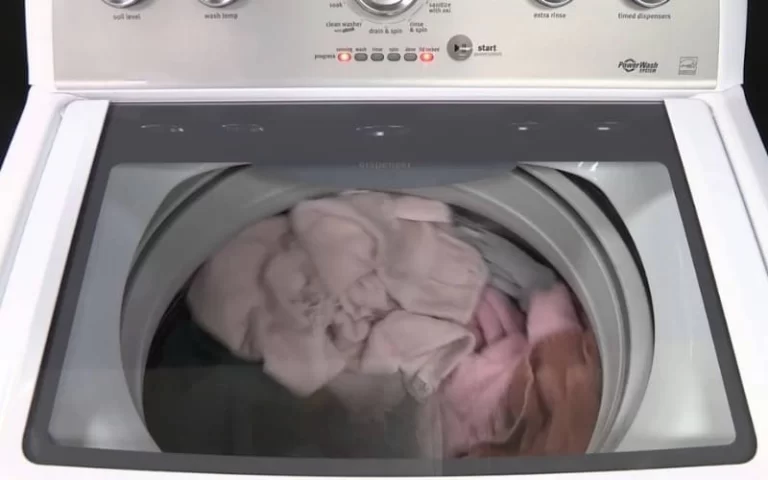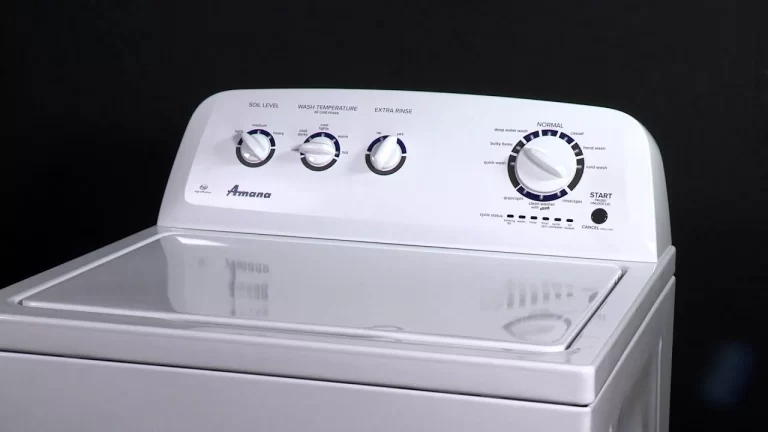Samsung washers, a flagship product from one of the world’s leading electronics companies, have grown in popularity due to their advanced features and reliable performance. However, like all technology, there might be instances when you need to reset your machine. This article delves deep into understanding when, why, and how to reset a Samsung washer.
To reset a Samsung washer, first turn it off and unplug it. Wait for 10 minutes, then plug it back in. Turn on the machine. If issues persist, consult the user manual for model-specific reset instructions or consider a more detailed reset process. Always prioritize safety during the procedure.
Common Reasons for Resetting a Samsung Washer

Samsung washers, just like any other advanced electronic devices, occasionally run into issues that require a system reset. Resetting your washer can be likened to rebooting your computer—it offers a chance to clear out minor glitches and get the system running smoothly again. Here’s an in-depth look at some common reasons that might necessitate a reset:
1. Error Messages or Codes:
Samsung washers come with a diagnostic system that displays error codes whenever there’s an issue.
For instance, the “4E” error signifies problems with water supply, while the “5E” error indicates drainage issues.
Resetting the washer can sometimes clear these error codes if they are the result of minor glitches rather than actual mechanical or electrical problems.
2. Malfunctioning Cycle Settings or Interruptions:
At times, the washer might pause, skip, or halt in the middle of a cycle without any clear cause.
Issues with the machine’s internal memory or software glitches can cause interruptions in set wash cycles.
A reset can often restore the normal function and allow you to resume washing.
3. Unresponsive Touch Panels or Buttons:
Over the years and with repeated use, some buttons or touch panels might become less responsive or completely unresponsive.
This might be due to temporary software bugs, where the system isn’t recognizing input commands.
A quick reset usually helps in such cases, making the controls responsive again.
4. Washer Behaving Unpredictably:
This encompasses a range of issues from excessive vibrations, random start/stops, to inconsistent spin speeds.
Sometimes, power surges, brief outages, or brownouts can mess with the washer’s electronics, leading to unpredictable behavior.
Resetting can recalibrate the system and resolve these erratic behaviors.
5. Post-Maintenance or Repairs:
After certain maintenance tasks or component replacements, you might need to reset the washer.
This ensures that any changes made are integrated correctly and that the washer operates with its updated configuration.
For instance, if a new software patch is installed, a reset ensures that the new software version initializes properly.
6. Memory Overload:
Just like a computer, your washer has a memory that stores data regarding various cycles, custom settings, and other operations.
Occasionally, this memory can get overloaded, especially if there are frequent changes in settings or if there’s an attempt to initiate conflicting commands.
Resetting can clear this overload and restore normal function.
7. Frozen Interface:
In rare cases, the washer’s digital interface might freeze, akin to a computer screen freezing.
This prevents any inputs, selections, or changes from being made.
Resetting usually clears this freeze and revives the interface.
Preliminary Steps Before Resetting

Before diving into the reset process for your Samsung washer, it’s crucial to ensure the safety and efficiency of the operation. These preparatory steps not only safeguard you and your appliance but also help pinpoint whether a reset is genuinely necessary. Here’s a detailed breakdown:
1. Ensure the Washer is Unplugged or Powered Off
Safety First: Always disconnect the washer from its power source. This prevents accidental startups, electrical surges, or any other mishaps during the reset process.
Memory Clearance: Unplugging the machine can also help clear any temporary memory issues or minor glitches that might be causing the malfunction.
2. Check for Obvious Damages or Issues
Visual Inspection: Before attempting a reset, do a thorough visual check. Look for signs of wear, tear, or any external damages that might be the root cause of the problem.
Loose Cables and Hoses: Ensure that all connections, especially water inlets and drainage hoses, are secure. Sometimes, a loose connection might mimic a problem that seems solvable by a reset.
Internal Blockages: Open and inspect the washer drum for any foreign objects or accumulated lint that might hinder its operation.
3. Ensure the Door is Closed Properly
Safety Mechanisms: Most modern washers, including Samsung, have built-in safety mechanisms that prevent the machine from operating if the door isn’t sealed correctly.
Check the Latch: If the door isn’t latching properly, the issue might not be with the washer’s software but the physical door mechanism.
4. Review the User Manual
Model-specific Recommendations: Samsung has a wide range of washer models, each with unique features. The user manual provides specific instructions and troubleshooting steps tailored for your model.
Error Code Reference: If your washer displayed an error code, cross-referencing it with the manual can give insights into the nature of the problem.
Reset Procedures: The manual will also provide the recommended reset procedures, ensuring you’re not inadvertently causing more harm.
5. Check for Recent Power Outages or Surges
Temporary Glitches: Power interruptions can cause temporary software glitches in electronic appliances.
Power Strips: If your washer is connected through a power strip, ensure it’s functioning correctly. A faulty strip might disrupt power supply, mimicking a washer malfunction.
6. Consider the Age of the Machine
Wear and Tear: Older machines are more prone to wear and tear. If your washer is old, consider if the issues might be due to the natural life cycle of the appliance rather than something a reset can fix.
Software Updates: For newer models with advanced features, ensure the washer’s software is up-to-date. Outdated software can sometimes cause malfunctions.
7. Listen for Unusual Noises
Internal Issues: Sometimes, a problem might manifest as an unusual sound, like grinding, squeaking, or repeated clicking. These sounds can hint at the nature of the problem, like a faulty motor or a blocked pump.
Step-by-Step Guide to Resetting Samsung Washer

Resetting a Samsung washer can seem like a daunting task, especially if you’re unfamiliar with the process. However, with the right steps, it’s a straightforward procedure. Here’s an expanded guide to help you reset your washer with ease:
Step 1: Soft Reset
Purpose: A soft reset is akin to restarting your computer. It can clear minor glitches and doesn’t affect your customized settings or saved cycles.
Procedure:
- Turn off the washer using the power button.
- Unplug the machine from the power outlet.
- Wait for about 10 minutes. This waiting period ensures that any residual power is drained and gives the washer’s internal systems a chance to reset.
- Plug the machine back into the power outlet.
- Turn on the washer using the power button.
- Check to see if the issue persists.
Step 2: Hard Reset
Purpose: A hard reset is a more thorough reset process, which can be beneficial if a soft reset doesn’t solve the problem. It might reset some customized settings.
Procedure:
- Ensure the machine is powered off.
- Press and hold the ‘Start/Pause’ button (or the button indicated in the user manual for your specific model) for about 3-5 seconds.
- The washer’s display should flash or beep, indicating that the reset process is initiated.
- Release the button.
- Turn on the washer.
- Monitor the machine to see if the initial issue has been resolved.
Step 3: Factory Reset (Only available on specific models)
Purpose: A factory reset will revert your washer back to its original settings, as it was when you first purchased it. This means any saved cycles, custom settings, or preferences will be erased. It’s the most comprehensive reset and is typically used when other reset methods fail.
Procedure:
- Turn off the washer.
- Consult your user manual for the specific button combination for a factory reset. This often involves holding down two buttons simultaneously (e.g., ‘Temp’ and ‘Delay End’) for several seconds.
- The washer may beep or flash on its display to confirm the reset.
- Once the factory reset is complete, turn the washer on.
- As all your settings will be lost, you’ll need to reconfigure any preferred settings or saved cycles.
Important Notes:
- Back-up: Before performing a hard or factory reset, make note of any custom settings or cycles you’ve configured, so you can restore them later.
- Consult the Manual: Always refer to your specific model’s user manual before attempting a reset. The button combinations and procedures might vary between models.
- Persistent Issues: If after performing the reset(s), the issues persist, it’s a sign that there might be a deeper underlying problem that requires professional attention.
What to Do if Reset Doesn’t Work
When you’ve tried the suggested reset steps and your Samsung washer still isn’t functioning as it should, it can be both frustrating and concerning. However, there are several additional measures you can take before considering a repair or replacement:
1. Double-check Your Preliminary Checks
- It’s always a good idea to revisit the preliminary checks. Sometimes, a minor oversight can be the culprit.
- Ensure that all connections are secure, the door is sealing properly, and there’s no visible damage.
2. Consult the User Manual for Error Codes
- If your washer is displaying a specific error code, cross-reference it with the user manual.
- Each error code typically corresponds to a particular issue, and the manual might provide troubleshooting steps unique to that code.
3. Run a Diagnostic Test
- Some Samsung washer models come equipped with a diagnostic mode that runs a series of checks to determine any malfunctions.
- Consult your user manual for instructions on how to initiate this mode and interpret the results.
4. Check the Warranty
- Determine if your washer is still under warranty. If it is, you might be eligible for free repairs or even a replacement.
- Ensure you have the purchase receipt and warranty card handy when reaching out to the manufacturer.
5. Seek Professional Help
- If you’re unable to diagnose the issue yourself, it’s time to consult a professional.
- Contact a certified technician or the retailer where you purchased the washer.
- Describe the problem in detail, providing them with any error codes or unusual behaviors you’ve observed.
6. Consider Software or Firmware Updates
- For advanced models that come with smart features, check if there are any software or firmware updates available.
- Outdated software can sometimes lead to malfunctions, and an update might provide the fix you need.
7. Inspect the Power Source
- Faulty outlets or unstable power sources can lead to inconsistent washer performance.
- Test the outlet with another electronic device to ensure it’s delivering consistent power.
- If using a power strip, check its condition or try plugging the washer directly into the wall outlet.
8. Review External Factors
- Sometimes, the issue might not be with the washer itself but external factors.
- Check if the water supply is consistent and if the drainage path is clear. Blocked pipes or inconsistent water supply can lead to wash cycle issues.
9. Investigate Online Forums or User Groups
There are many online forums and user groups where individuals discuss issues with specific Samsung washer models.
Searching these platforms might provide insights into your problem and potential solutions that other users have discovered.
10. Consider Age and Wear
- If your washer is quite old, it might be experiencing problems due to natural wear and tear.
- In such cases, while repairs are possible, it might be more cost-effective in the long run to consider a replacement.
FAQs
Why does my Samsung washer display error codes, and do they always mean something is broken?
Error codes are diagnostic tools that Samsung washers use to communicate potential issues or malfunctions. While they are indicative of anomalies, they don’t always mean a major component is broken. Sometimes, they can be triggered by minor issues like a door not sealing properly or a blocked drain hose. Always consult your user manual to interpret the specific error code and its recommended troubleshooting steps.
How often should I reset my Samsung washer?
Resetting your washer should not be a regular routine. It’s more of a troubleshooting step when you encounter specific issues. If you find yourself needing to reset the washer frequently, it could be indicative of an underlying problem that might require professional attention.
Is resetting my Samsung washer safe for the machine? Can it cause any damage?
When done correctly, following the steps provided in the user manual or reliable sources, resetting your washer is safe and should not cause any damage. It’s designed to be a standard troubleshooting step. However, always ensure you’ve unplugged the machine and taken necessary precautions before performing any reset to ensure safety.
After a reset, will I lose all my custom settings and preferences on the washer?
It depends on the type of reset. A soft reset, similar to just turning off and on, typically doesn’t erase your custom settings. However, a factory reset, which reverts the washer back to its original settings, will erase any saved cycles, custom settings, or preferences. It’s always a good idea to note down your customized settings before doing a factory reset.
If I can’t fix the issue even after resetting, is my washer beyond repair?
Not necessarily. While a reset can fix many common glitches, certain mechanical or electrical issues might require expert diagnosis and repair. If your washer still isn’t functioning correctly after a reset, it’s recommended to consult a certified technician. They can provide a more detailed inspection and offer solutions, whether it’s a specific repair or, in rare cases, a recommendation for replacement.
Conclusion
Understanding how to reset your Samsung washer can save you both time and potential repair costs. It’s essential, however, to always prioritize safety and consult your user manual when in doubt. Proper care and attention can extend your washer’s lifespan and ensure optimal performance.

